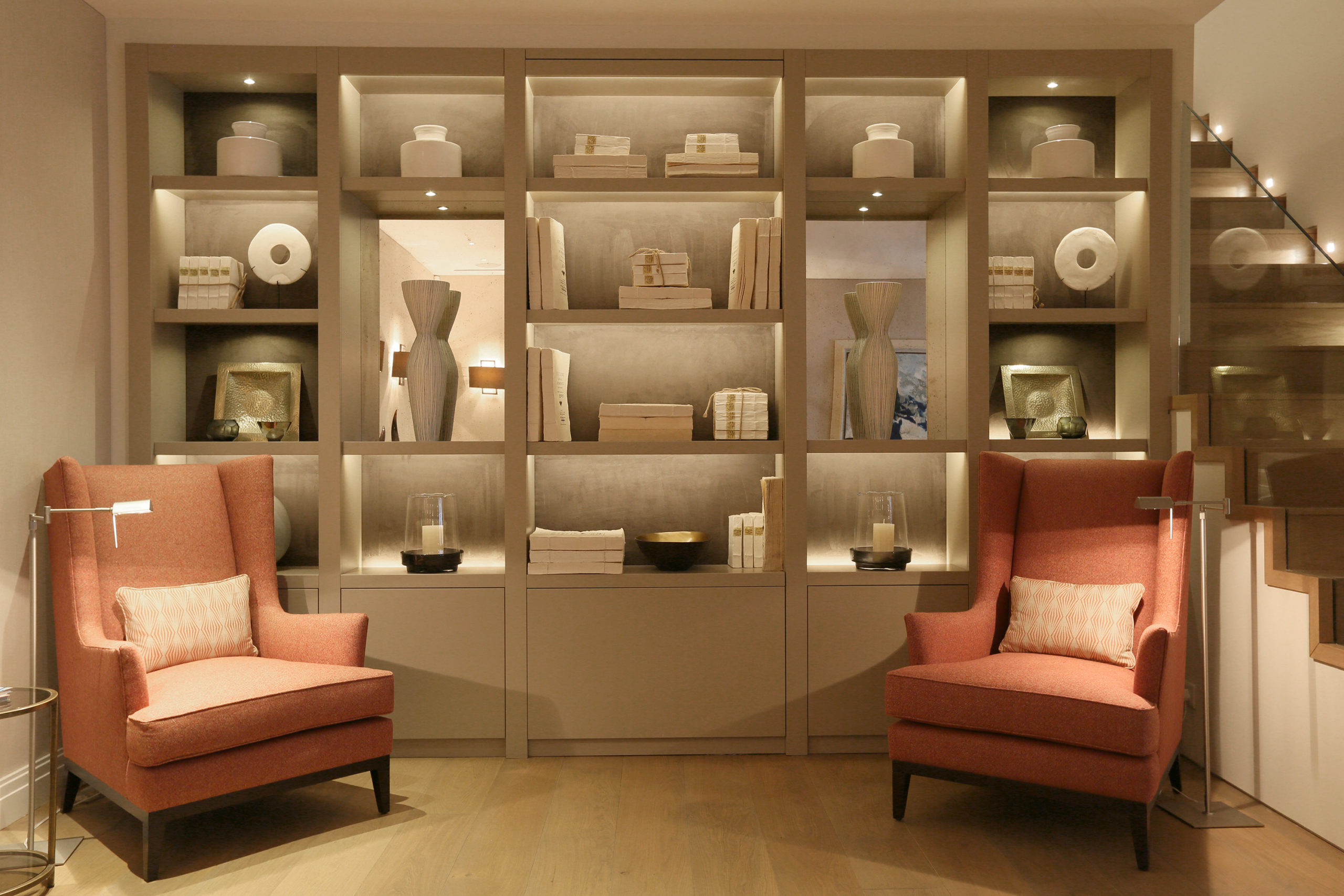
Lighting joinery is an excellent way of bringing another layer of light into a space. It adds a level of indirect softness and can appear like a window in a room, which works particularly well in basements. The ideal balance of light is best achieved by using multiple layers of light rather than using just one type of light source. This allows for contrast rather than rendering everything in the same amount of light. This can create a visual interplay of light and shadow, interesting silhouettes and patterns, bringing the beauty of materials and objects within to life.
To help you maximise use of this great lighting tool, here’s a brief overview from our Lighting Designer Bhushan Khute on how we plan and implement joinery lighting:-
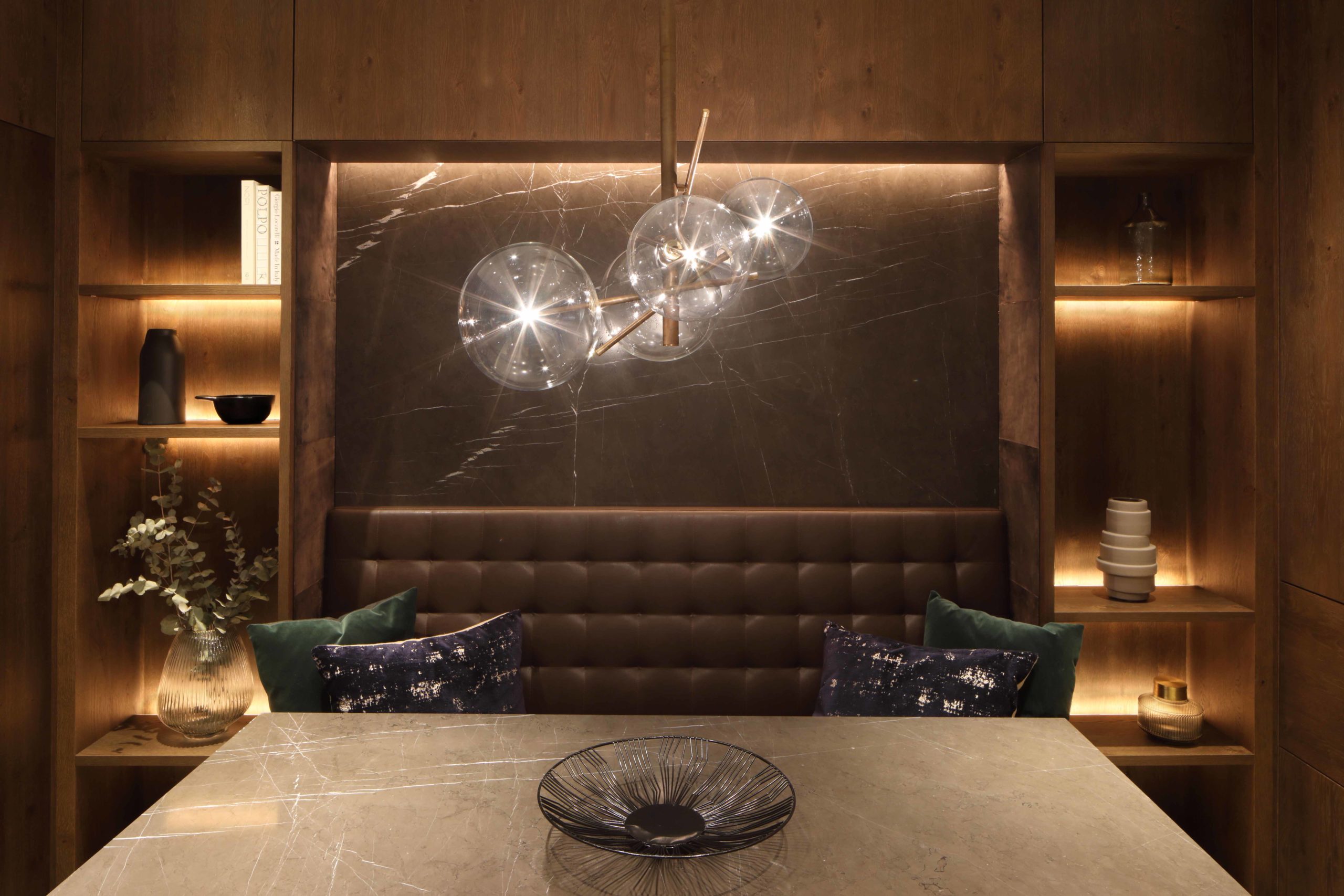
Plan early
There is no rule of thumb on how to light a joinery piece, but a little bit of forward planning and c0-ordination can take you a long way to both stage your objects and create mood.
The implementation of joinery undergoes various stages of development throughout the project. Interior Designers envision joinery based on the clients’ requirements which are then realised by joiners. Planning and collaborating well in advance how you would like to integrate lighting schemes into these pieces is key to both its flexibility and end result.
Think about your finishes
The choice of materials and finishes make a huge difference to the selection of light sources, along with how they are integrated. Matt finishes create a more diffused light compared to reflective surfaces such as glass and mirrors which are more challenging. Firming up these finishes in the early stages of the project ensure the correct detailing is selected which integrate light invisibly and avoids glare or unnecessary reflections. Collaborating and having initial workshops with designers helps in making conscious decisions about selecting the best lighting for the right finishes and materials.
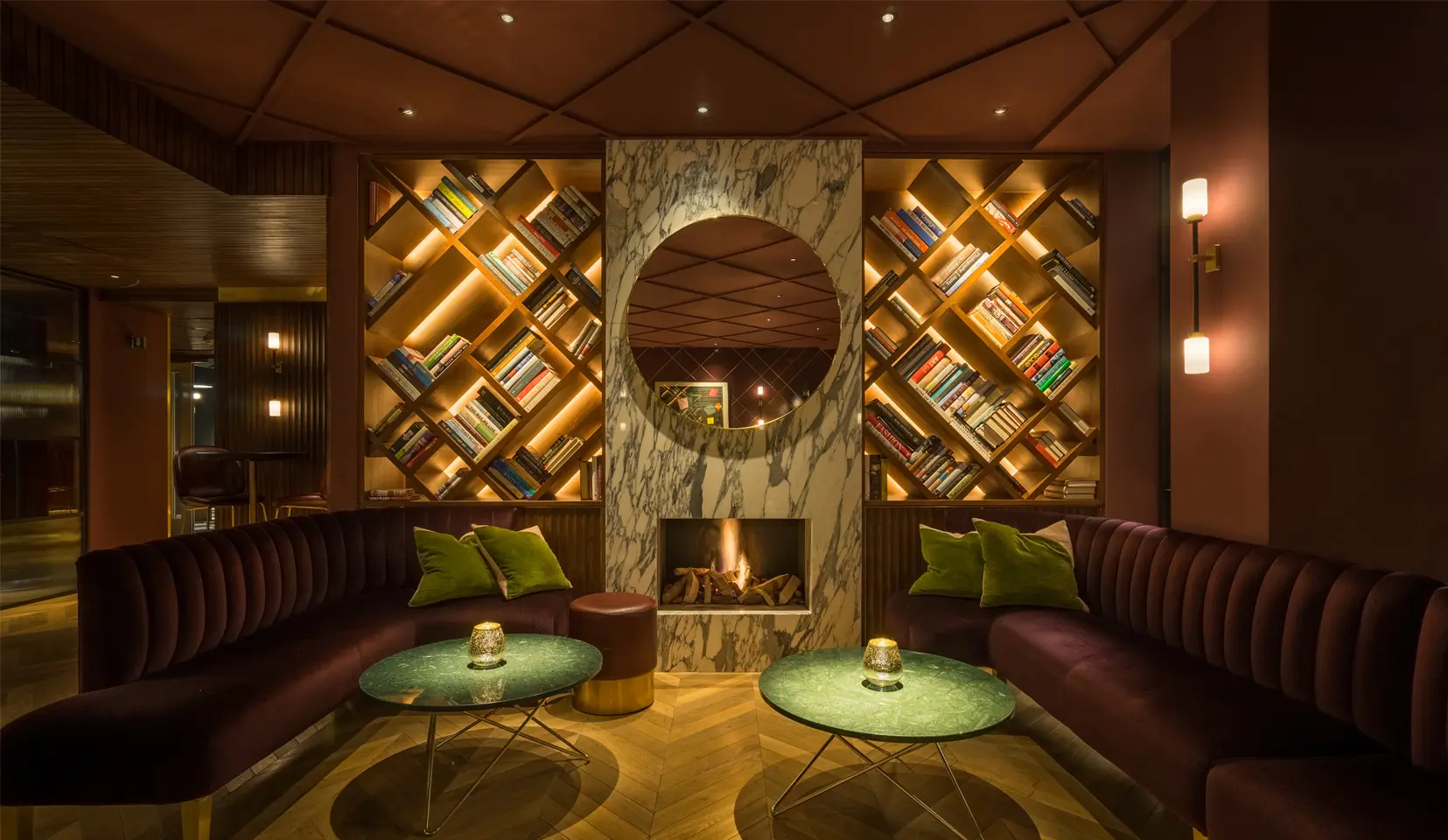
Quality of Light
Even though joinery accounts for only a small portion of the lights used in a project, the richness (or simplicity) of the materials and the objects can act as a canvas to demonstrate how good or bad the quality of light used is. Choosing the right light in terms of colour temperatures and CRI can help you achieve the best results. The difference will be made using good quality shelf lights. They need to be both colour-consistent, so each shelf does not look a slightly different colour and have a high CRI (Colour Rendition Index) of 90 or above to show the true colours of the objects being lit.
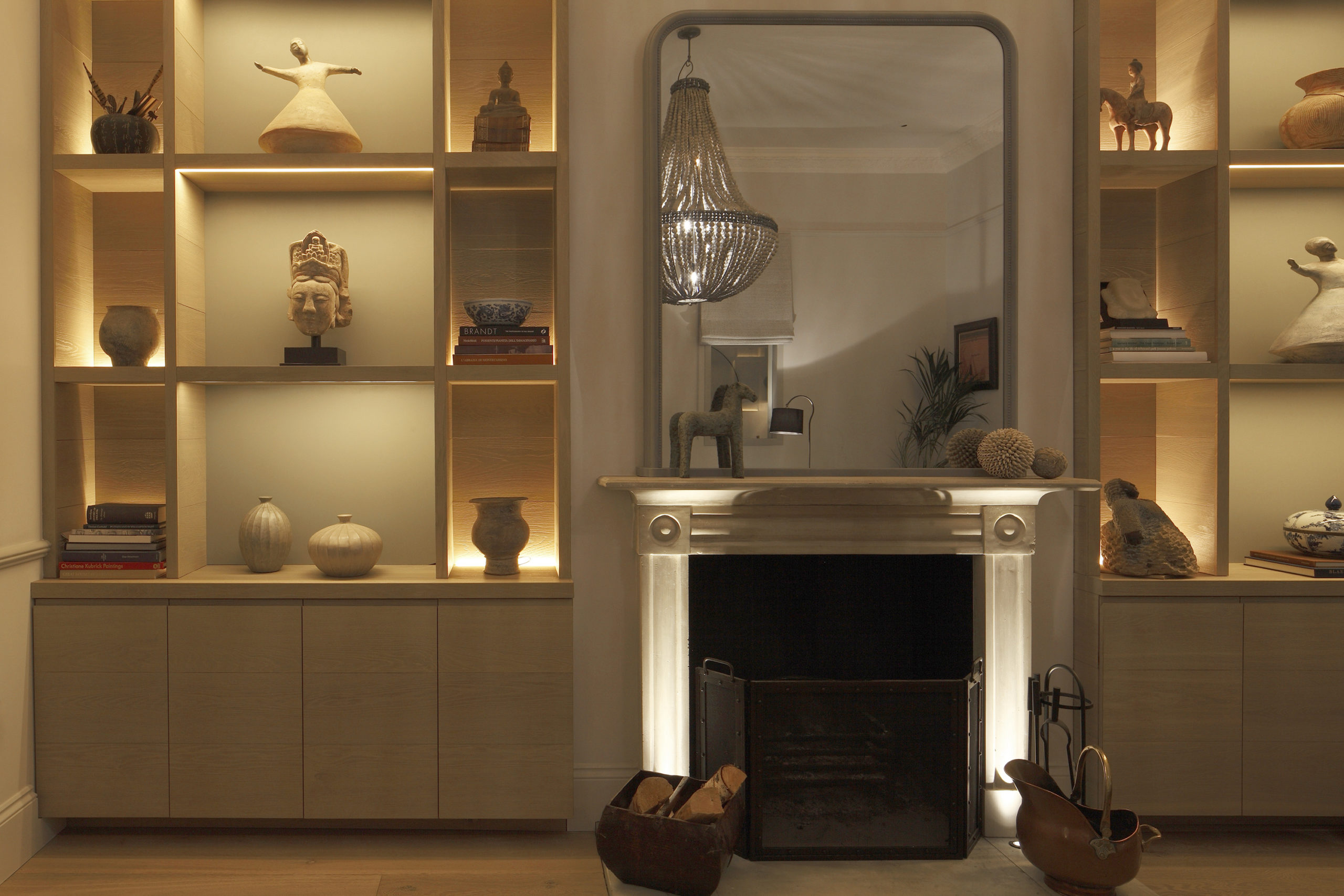
Light is in the Detail
As the project progresses and materials have been finalised, detailing how these layers are integrated takes the centre stage. See more about the basic techniques for shelf lighting.
When considering backlighting, one of the key considerations is allowing enough room to diffuse the light. Leaving a 30-40mm gap behind the shelf is often useful when creating a beautiful backlit diffused gradient which captures a dramatic silhouette of the pieces on display. The light source can either be integrated in a detail (complete with profile and a diffuser) or if the gap is too tight, a bare tape on an installation bar comes in very handy.
Front lighting is a simpler and quite straight forward layer of light. Contour HD strip or point source of light such as the Polespring 30 shelf light which is either integrated in a detail or is concealed behind an upstand or downstand depending on what is possible. Our Vorsa Dot track mounted spot and floodlight is also a discreet and impactful solution.
Downlighting as a technique is more ideal in situations where joinery lighting interacts with reflective surfaces such as enamel, glass or mirror. A pinpoint of light from the top, down a layer of glass shelves helps you capture drama and avoid glare bouncing off surfaces. Do note though that integrating this layer often requires sufficient recessing depths, which requires an early conversation with a designer or joiner. The Minim miniature joinery light is an excellent, discreet solution, which can be recessed
Lighting from the ceilings can come to your rescue in case you still want to add a layer of front lighting and leave the delicacy of thin shelves intact.
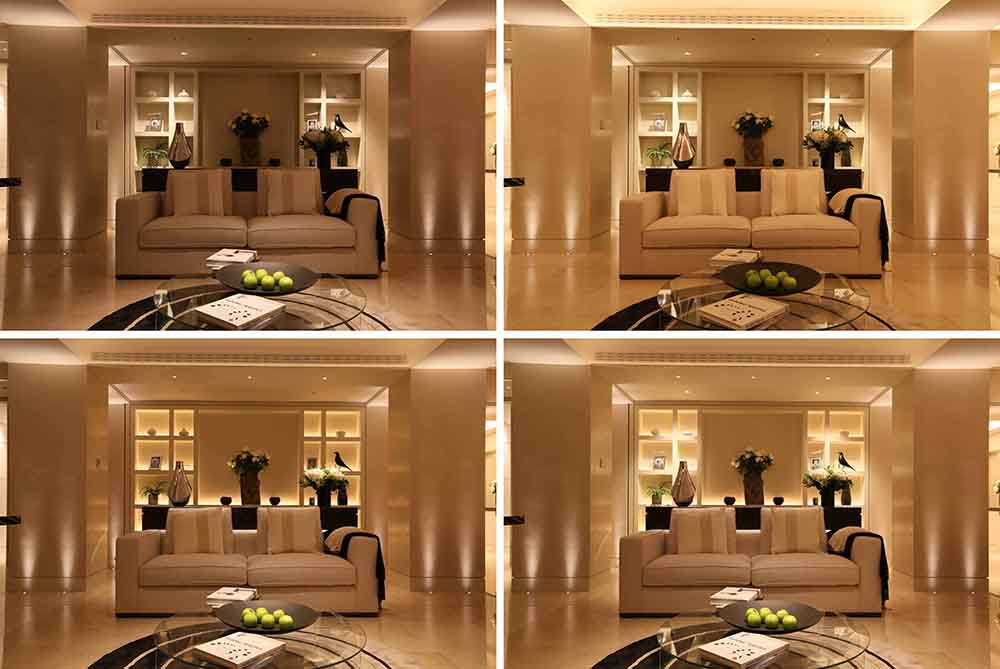
Adjusting Brightness
Dimming is probably the most underplayed yet most important process when thinking about the overall balance of a room. Controlling the different intensities of your layers of light help to achieve the perfect balance, making your lighting schemes bespoke for every mood or occasion. A certain amount of forethought goes a long way when integrating joinery lighting into the control systems but sometimes this can be still achieved in more developed stages of the project by upgrading drivers to dimmable ones and some extra wiring.
Dimming is especially important when lighting joinery in dressing rooms and bathrooms. These spaces require intensities to be more sensitive to the requirements of the user at different times of the day.
Read our Joinery Brochure for elegant lighting solutions for your next project.